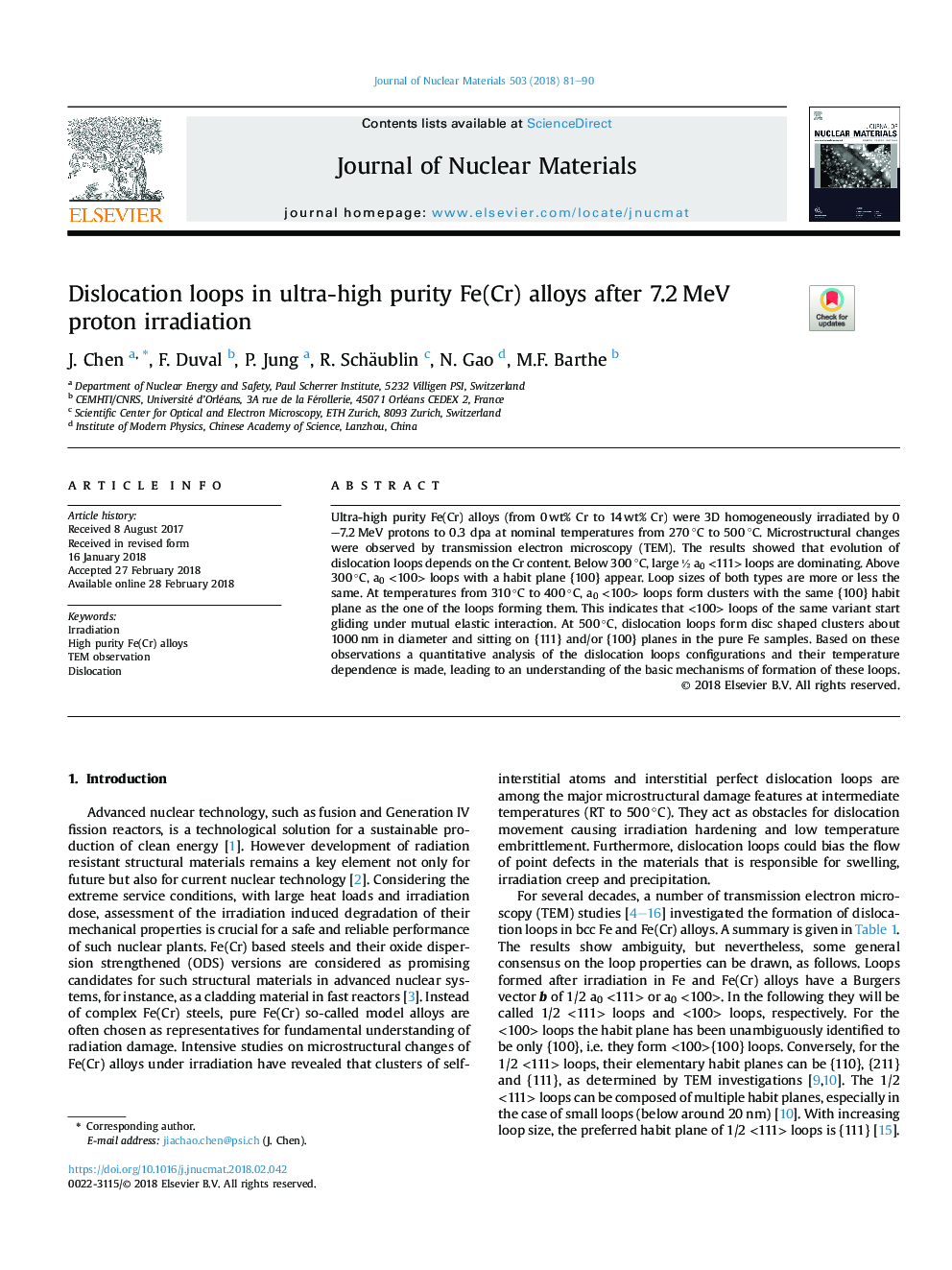| Article ID | Journal | Published Year | Pages | File Type |
|---|---|---|---|---|
| 7963313 | Journal of Nuclear Materials | 2018 | 10 Pages |
Abstract
Ultra-high purity Fe(Cr) alloys (from 0â¯wt% Cr to 14â¯wt% Cr) were 3D homogeneously irradiated by 0-7.2â¯MeV protons to 0.3 dpa at nominal temperatures from 270â¯Â°C to 500â¯Â°C. Microstructural changes were observed by transmission electron microscopy (TEM). The results showed that evolution of dislocation loops depends on the Cr content. Below 300â¯Â°C, large ½ a0 <111> loops are dominating. Above 300â¯Â°C, a0 <100> loops with a habit plane {100} appear. Loop sizes of both types are more or less the same. At temperatures from 310â¯Â°C to 400â¯Â°C, a0 <100> loops form clusters with the same {100} habit plane as the one of the loops forming them. This indicates that <100> loops of the same variant start gliding under mutual elastic interaction. At 500â¯Â°C, dislocation loops form disc shaped clusters about 1000â¯nm in diameter and sitting on {111} and/or {100} planes in the pure Fe samples. Based on these observations a quantitative analysis of the dislocation loops configurations and their temperature dependence is made, leading to an understanding of the basic mechanisms of formation of these loops.
Related Topics
Physical Sciences and Engineering
Energy
Nuclear Energy and Engineering
Authors
J. Chen, F. Duval, P. Jung, R. Schäublin, N. Gao, M.F. Barthe,
